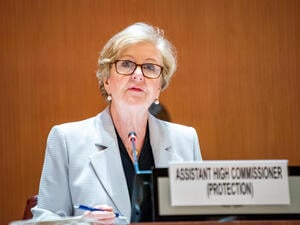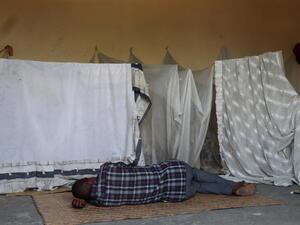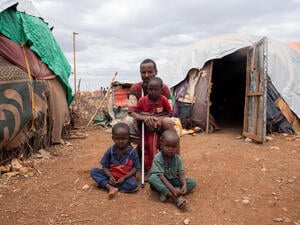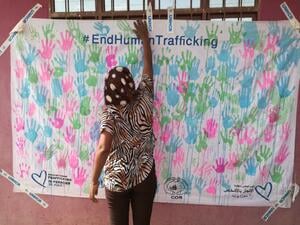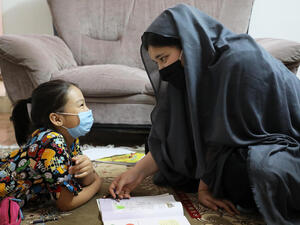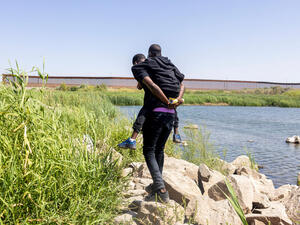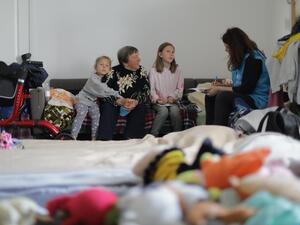Central and North American states vow joint action on refugees
Central and North American states vow joint action on refugees

A mother and child who fled gang violence in El Salvador and are now living as refugees in Mexico.
GENEVA – A pledge by nine countries from North and Central America to work together to strengthen the protection of refugees fleeing Central America has been welcomed by UNHCR, the UN Refugee Agency, as a landmark step ahead of UN and US summits next month on refugees and migrants.
“It is vital and immensely gratifying to see the countries of the Americas coming together in a regional approach to devise humane, collaborative solutions for people in desperate need of life-saving help,” said UN High Commissioner for Refugees Filippo Grandi. “This is the path to helping the most vulnerable among us regain lives of dignity,” he said.
In the joint San Jose Action Statement, the governments of Belize, Canada, Costa Rica, El Salvador, Guatemala, Honduras, Mexico, Panama and the United States acknowledged the need for stronger protection of asylum seekers, refugees and internally displaced people in the region.
“This is the path to helping the most vulnerable among us regain lives of dignity.”
“We are confronted with a growing number of asylum seekers and refugees and recognize the need for asylum systems to identify and respond to those in need of international protection,” the countries said.
The statement, an outcome of an unprecedented gathering of concerned governments organized by UNHCR and the Organization of American States in Costa Rica last month, noted that the swelling flow of refugees and other migrants in the region was due to a variety of factors.
But it also stressed the importance of “timely identification and documentation” of people in need of protection, of “unhindered access to fair and efficient procedures for protection,” of finding alternatives to detention for asylum seekers and of ensuring their access to legal aid.
The San Jose meeting was also attended by four South American countries and other interested states as well as representatives of other UN agencies, international institutions including the Inter-American Development Bank, World Bank, International Organization for Migration, International Committee of the Red Cross, national human rights institutions, national and regional NGOs, civil society and academia.
In an individual declaration accompanying the San Jose Action Statement, Costa Rica said it was committed to addressing, with the help of UNHCR and “as a matter of urgency,” the backlog in asylum applications and supporting the local integration of refugees.
Most asylum applications are from people forced to flee violence by heavily armed transnational gangs.
Most asylum applications are from people forced to flee widespread violence by heavily armed, transnational gangs in El Salvador, Honduras and Guatemala that have made these countries – known collectively as the Northern Triangle of Central America – one of the most deadly places on earth.
In its accompanying declaration, Mexico said it was committed to building refugee protection capacity while the United States said it would work with UNHCR to expand its Refugee Admissions Program in order to help vulnerable people fleeing the Northern Triangle countries.
Honduras acknowledged the problem of forced displacement within and across its own borders, pledging to allocate the resources needed to expand protection and emergency assistance for persons displaced by violence including through new laws, emergency shelters and public awareness-raising efforts.
“The San Jose Action Statement is a visible and significant demonstration of the willingness of countries from the region to work together to address the plight of refugees, internally displaced persons and others in need of protection, in a spirit of solidarity and within a collaborative responsibility sharing framework. This will be an important contribution the UN Leaders' Summit on 19 September,” said UNHCR's Assistant High Commissioner for Protection Volker Türk, who co-chaired the meeting with the Secretary of the OAS.
You can read a press release version of this story here.

